- Home
- Adam Nicolson
Sissinghurst, an Unfinished History
Sissinghurst, an Unfinished History Read online
EARLY BIRD BOOKS
FRESH EBOOK DEALS, DELIVERED DAILY
BE THE FIRST TO KNOW ABOUT
FREE AND DISCOUNTED EBOOKS
NEW DEALS HATCH EVERY DAY!
Sissinghurst, An Unfinished History
The Quest to Restore a Working Farm at Vita Sackville-West’s Legendary Garden
Adam Nicolson
for Sarah
with all my love
and
for Sally Bushell, Jonathan Light,
Sue Saville and Fiona Reynolds
with many thanks for
their longstanding support and encouragement
CONTENTS
1 Sissinghurst
2 Inheritance
3 The Idea
4 Origins
5 Testing
6 Occupation
7 Rejection
8 Glory
9 Disintegration
10 Acceptance
11 Admiration
12 Renewal
Image Gallery
Eighteenth-Century Sissinghurst
Note on Sources
Illustrations
Index
Acknowledgements
About the Author
ONE
Sissinghurst
I have lived at Sissinghurst, on and off, for the last forty-five years. For my entire conscious life it has been what I have thought of as home, even when living away, in London, or abroad. For all my attachment to other places, this has always seemed liked the root. I belong to it. It is the land I have walked over, looked out over, driven through, smoked my first cigarette in, planted my first tree in, bicycled over, slept in and lived in all my life. It is where I came to understand what a tree was, what a friend was, what a hideout was, what a landscape was, how entrancing streams were as they made their way in and out of the margins of a wood, and what solitariness, nature and love might be.
If I think of a view, or of mist on an autumn morning, the way it lies in a valley like a scarf, or the way a stream when blocked makes a reedy place upstream of the blockage, where after time willows grow in the wetness and make a dark summer tent over the bog; or the way wild flowers peak and then collapse as spring deepens into summer; if I think of geese belling across winter fields; or of being alone, or of the transition from childhood to adolescence, of the relationship of a place to its history or its future: every one of those things, strung out across my life, like lights marking a channel, is tied to and founded on Sissinghurst. It is the shape of what I am. I do not own it but it is my place. Anything else can only ever be an approximation to it.
There is a tree in the garden, an oak, growing on the edge of the moat that my sister Juliet and I planted together when she was four and I was one. It is nearly fifty years old but, in its tree-life, still in its teens. One or two of the lower branches have been pruned, to improve its shape, and the bark of the oak is creeping back, in pillowed, almost animal ridges, across the scars that the saw has left. But the rest of the tree – it is a strange hybrid, a sycamore oak, which has oak leaves but drops sycamore seeds in the autumn, the single wings helicoptering to the autumn grass – the rest of the tree is in the first glowing moment of adulthood, no leaning in the trunk, a full head of hair, if you can say that about a tree, a kind of bushy-brushed wholeness to it, its trunk like the trunk of a young man. It is now part of the Sissinghurst landscape, rooted, solid, essential, inevitably there, and I feel in my heart as much part of this place as that tree. My nutrients come from this soil.
When I was a boy here in the 1960s, my father used to take us, my sisters and me, down to the stream that runs through the wood, usually after lunch in the winter, to have a boat race. We chose small, fat sticks for boats, to be thrown into the stream where it entered the wood below a marshy patch in the Dog Field. He cut long wands from the hazels for what he called ‘hoikers’ – the only way, if your stick got caught in the deep trench of the stream, that you could hoik it back into the main flow. No cheating was allowed, nor hurrying on of your stick if it happened to be drifting in a treacle-slow section of the current. It had to be stuck and immobile before you could push it back into the race with the hoiker. The finishing line was the chestnut bridge by the outflow from the lake. All of us cheated when he wasn’t looking.
Or there were clearance weekends and bonfires, the brambles and dead wood lopped and slashed away with bill-hooks and bowsaws, all piled on to a smoky fire, the smoke finding its way out through the roof of the coppiced chestnuts as if through the thatch of a medieval hall. He would send me down to the wood sometimes to start the fire on my own before he came to join me. Start it small, he said, but make it as big as you can. Once he raced me to Bettenham, the neighbour farm to Sissinghurst, half a mile away, him on foot, me on a bike. I remember him now, stampeding down the track ahead of me, uncatchable and distant, however hard I pedalled.
Sissinghurst is embedded in the most explorable and boy-friendly of all landscapes, a part of Kent, no more than fifty miles south of London, called the Weald. That is an ancient Saxon or Germanic word meaning ‘forest’, but over the twelve or thirteen centuries since the Saxons arrived here that huge stretch of woodland was cut up and largely cleared so that the Weald now is a patchwork of small woods and farms, with streams curling between them and lanes connecting one to another. It is a stretch of country which is accessible to London and its commuters but which has an enormously deep past and is still full of hidden secrets. A sense of invitation is plastered all over it and on summer mornings, at breakfast, on the bleached and knotty deal of the kitchen table, my father would pore with me over a 2½-inch map of it, exploring its possibilities with our fingers: the gridlines pale blue, the occasional contours a browny orange, the stipple of the scattered farms, each with the blue spot of a farmyard pond. Why don’t you go and see what the Hammer Brook is like here – a bridge four miles away downstream – or here, where it joins the Beult? You see where it says ‘Roman Road’ there, where it goes down the contours of that hill? Or look, a Roman ford – miles away, south of Benenden, into another parish – why don’t you see if you can go and find that?
So I did, alone on my bike for hours and days at a time, looking for these places that he had made precious and important to me. I learned to read the map, which I kept folded in my pocket. I found the Roman road dropping south through woodland beyond Benenden: he must have known it but never told me he did, a place reverberating with the past, a huge trench as straight as it should be, just wobbling here and there like a piece of furniture two thousand years old, half a mile long, exactly preserved and deeply creased into the Wealden hill. I remember it now, its runnel filled with autumn leaves, the hornbeams and hazels on its banks, unvisited, unknown, the most wonderful and vivid antiquity I had ever seen. At the bottom of the valley, on a tiny tributary of the Rother no more than two feet wide, trickling to the south, with ferns and moss around them, I found the smooth dark stones of the Roman ford, scattered in the stream bed, as neglected as they had been since the Romans left 1,500 years before.
I would return from these expeditions, excited and exhausted, unaware of the riches I was gathering. Only now do I see this as the best education a child could have: the private discovery of a stretch of country rich in buried meanings, so easily and fluently to hand, to be discovered with nothing more than a map and a bike. Seeing, I suppose, how much I loved it all, the finding of the way, the connections made in three dimensions which the map had hinted at and led one to, we started going on longer expeditions. One June morning, early, when the world was heavy with summer and greenness, we went for a long walk together through the flat, oak-hedged grasslands of the Low Weald towa
rds Biddenden. I was about eleven and we walked from one fifteenth-century Wealden farmhouse to another, through the cold morning, the leaves grey with dew, the sun blinking through them, maybe twelve miles or so, admiring the close-set studs, the pitch of the roofs designed for thatch, now tiled, the rooted richness of this country.
It is not the buildings I remember, though, but a long hay meadow on the Hammer Brook, a mile or two upstream, just the other side of Hammer Mill, which we came to as we circled back to Sissinghurst and breakfast. I had never guessed that an air of perfection was not something to be dreamt about, but could be experienced on your skin, as a living, seen reality. I thought then and can still imagine now that the meadow was the most beautiful thing I had ever seen. One side of the long narrow green space, perhaps four hundred yards from end to end, all of it walled in by the fresh green of the springtime wood, followed the brook’s meandering path. The other took a long straight line against the trees. We were there the morning after the farmer, Mr Hall, had mown the grass. He had begun by following the stream in his tractor and had laid his swathes in repeated, rippling slices which mimicked the stream itself, as if the wavy hair of the field had been combed flat but kept its wave, gleaming early that brilliant morning, like oiled braids, with the pale stubs of the shorn grass between each mown tress, the buttercups laid in with the grass as a summer wreath, a vision of perfection for that moment only, before Mr Hall came back with his tractor later that morning and began to turn and stir the grass with his tedder into the lifted ridges in which he needed it to dry.
We did other things: my father bought a double canoe and for three days we followed the Hammer Brook from where the Bettenham track crossed it, along its winding trench to the River Beult and then on to the Medway until we reached salt water at Rochester. We did the same on the Stour from Great Chart to Sandwich, taking with us this time, in a deliberate act of matchmaking, my cousin Robert Sackville-West, so that we would become friends, as we have remained for life. We walked to the North Downs across the Low Weald and then along the Pilgrim’s Way. We went to see where William the Conqueror had landed and then Julius Caesar. It was as if my father was conquering Kent for me, not the Kent of commuter modernity but an older place, one in which nature and culture were more intimately bound together and of which Sissinghurst itself always seemed to be the centre and the exemplar.
Nowhere felt deeper or more like a vein under the skin than down in the bed of the Hammer Brook. It was an entrancing and different world, a green, wet womb, a place of privacy and escape. Along the banks, the alders and hazels were so thick that the wavering line of the stream was like a strip of wood run wild. Once beneath them, you were in a liquid tunnel, arched over with leaves, gloomy in its hollows, suddenly bright where the sun broke through, seductively cool when the day was burning on the fields outside. Where the shade was particularly thick, in the depth of the little wood, the sunlight still found its way between the alders and the maples, making spots of light no bigger than a hand or a face, dropped across the darkness as if by a brush, looking like the speckling on the skin of a trout, or those pools of light hair you find on the flanks of a young deer.
The water flowed in riffles over the shallow bed, the gravel banks stained orange with the iron seeping from the ground. Green hanks of starwort sprouted from the stream floor. Occasionally, a small group of trout found its way from pool to pool, dark bodies in the sun, where curtains of the light dropped through the speck-filled water. In this tiny Wealden river, they were not the slick creatures of Wiltshire chalk streams, but flighty, on the edge of viability, darting away even from the shadow of a big dragonfly, a skimmer, manoeuvring in the air not far above them. There were pike here and they must have been fearful of those jaws, but I have stood on the bank and watched a family of about twelve trout, the spotted bodies in the golden water, not hanging as they do in a big stream, but actively seeking prey, a gang of fish on the hunt, the big swaying adults, the slighter young ones, all of them rootling like pigs in the stones of the bed.
It was a world that encouraged slowness, detail, attention. Downstream of each of the gravel banks, at the head of the still pools, I watched the current circle back on itself in tiny transient spirals, no more than a millimetre deep, slowly whirling through the leopard-spot patterns of light and shade. Nothing showed that the water was moving unless there happened to be the fleck of a seed pod or a fly caught in the surface, making its waltzing, turning progress downriver. Through it all a drowsy current moved, with amber-lit sandbanks far below, and sometimes a drifting leaf caught under a stone, waving up from its bed.
Then, rarely, as a treasure from nowhere, something different: I remember the first time I saw it here. I was standing in the river, the water running up against my boots, and dragging at them, so that the rubber was wobbling with the pull of the current and the tops of the boots were opening and closing like a pair of lips. I had the dog with me, splashing in the shallows, shaking the drops from his muzzle so that his own lips were slapping against his teeth. Then from nowhere it came past us: a kingfisher searing through the gloom, making its turns along this river sunk beneath the fields on either side, a soundless riff played on the river air.
That swerve, a taut, cut line of wing through air, with so much verve to it, as if running the length of an electric wire, was a form of quickness the life of a plodding mammal could never approach, a magnesium strip in the light and dark of the river, travelling through those patches so that it seemed to flash as it passed, a stroboscopic flicking on and off of the colour, but with a continuity, a driven line, leaving only an afterburn on the mind’s eye, an undersurface glamour in the shadows of the stream.
I used to leave the house in my windcheater and gumboots and head out to the woods and tracks that cross Sissinghurst from north to south and east to west. The woods seemed enormous then. Their far boundaries were a long way from the house. They felt inexhaustible, unplumbed country. These were the places I loved to sink into, away from the noise and business of the house and garden. I dawdled in the wood, under the dark of the leaves; when scarcely a hundredth of the light in the air outside penetrated to the wood floor, the whole place was as cool as a church. The air in springtime by the streams was thick with wild garlic, and later with the sweeter, gentler smell of the bluebells. The swallows and house martins dipped on to the lake and the woodpeckers yaffled in the distant trees. The grassy banks on the field edges were dense with archangel, red campion and stitchwort, before the brambles and the nettles, always the winners in this annual race, strangled and overwhelmed them. All of these were the deep constituents of home. For days at a time, I circled the house and garden, all the public places at Sissinghurst, through this other hidden world, and never, or so it felt, emerged into view. It was as if out here, concealed from the public, the real thing existed, and that other place, over there, was an ersatz version of it, prepared for public view, with public, adult concerns dominating it in a way they wouldn’t or couldn’t in a distant field or wood.
The only person I ever met in the wood was the woodman. I never knew his name; neither he nor I was exactly adept at conversation, but I liked his thin, silent, pensive presence, as narrow as a rolled cigarette, intensely solitary, shy, turning away from any question to bend over his work. Every year in the winter he would buy the growing timber on an acre or two of wood, an area Kentish men have always called a ‘cant’. In a system of management at least as old as the Stone Age, a broadleaf tree if cut (or ‘coppiced’, the Norman-French word) would sprout again from the stump or stool. Within ten or twelve years, the new shoots would have grown thick enough to be usable for firewood or fencing and could be cut again. In this way the wood yielded up a steady harvest, cant by cant, twelve years by twelve years, and each part of the wood was at a different stage in the cycle: the tall smooth poles ready for cutting, the dense scrubby younger growth, or the cant just cut, shorn and freshened, like a stubble field after the harvest.
Each year the
woodman bought his cant, and alone, with his rough shed made from spare poles and a tarpaulin strung across them, he would fell the chestnut, cut the trees to length, split them and peel them, so that by the end of the winter huge piles of clean, shaved lengths and grey shaved bark came to lie around his shelter. The waste he would burn in big fires whose smoke trailed out over the head of the trees like a picture, it always seemed to me, of medieval England. You could have stood in the field outside the wood five hundred or even a thousand years ago and seen precisely that, even heard – if you edited out for a minute the repeated whining and relaxing of the chainsaw – the same sharp-heavy falling of billhook on wood stem, a clunk-cut, half heard across the distance, the same sudden crackle of a flame as it caught.
Then one day late in the winter, he would be gone, sometimes leaving his tractor there, wrapped up in tarpaulins, the rubbed places and hollows still worn around his shed where he had been working, but the chestnut poles gone, leaving only the clean faces of the cut stools. As the spring returned, the anemones flowered in the cleared wood and those coppice stools began to sprout again for their next cycle. Above them, the trunks of the oaks stood out in the air for the first time in years. And in the new openness of the cleared cant, the emergent dagger leaves of the bluebells pushed through the leaf litter as if from individual silos. That sense of purpose was everywhere: the primrose leaves crinkled like a Savoy cabbage, with the flowers just then unfolding; the cow parsley in low soft-edged pouffes about the size of a dinner plate at the foot of the hedges; dog’s mercury everywhere in the woods, as well as lords and ladies above the brown wood floor like the blades of soft-bodied spears.
Following that, in the great annual unfolding, the nightingales arrived and sang, as they do now, in two patches of thickety wood, one in an abandoned loop of the river, towards Bettenham, another a third of a mile to the south where the Hammer Brook is joined by the boat-race stream coming down through the Sissinghurst woods. The nightingales sing so loudly that you can hear them half a mile away in the garden by the moat, but faintly, like the weakest of signals picked up by the most sensitive of antennae. I remember that as a teenager once, on a warm night, after dinner, with half a moon shining, when everyone else had gone to bed, I went out towards them, walking and stumbling across the fields to where they were singing in their little moonlit thickets, bubbling and trilling, a song interrupted now and then by long, ecstatic, deep-throated slides into the bass register, which seemed to come from somewhere deeper within a body than any bird could manage. Those notes sounded as if the ground itself were singing. I lay down on the warm earth next to the thicket, in the field by the trees, and listened to one on my left, unseen in the bushes, and the other answering him six hundred yards away up the little valley, first one and then the other, a duet or duel, I couldn’t tell. Like all birds, it is the males who do the singing, and they sit on the ground inside their protective thickets. That is scarcely what it sounded like then: men, for sure, but more like the lords of two manors, shouting from their tower tops, each proclaiming the virtues of their wives and lands, their need for dominance and love of possession, the deliciousness of this thicket, the ridiculousness of the other, the hilarious beauty of this life, all its sorrows and all its wonders. I fell asleep and woke an hour later, with the stars turned in the sky above me, and the two of them still singing away, blow for blow, note for note, their sliding, gurgle-ecstasies exchanged across the moonlight, and I left them there, walking back through the bright blue fields, listening to the sound of the birds slowly weakening in my ear.

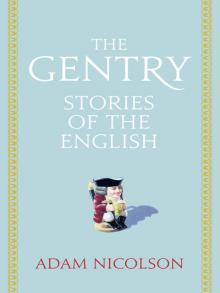 The Gentry
The Gentry Why Homer Matters
Why Homer Matters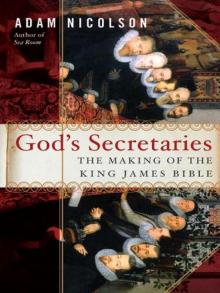 God's Secretaries_The Making of the King James Bible
God's Secretaries_The Making of the King James Bible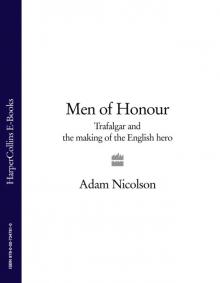 Men of Honour
Men of Honour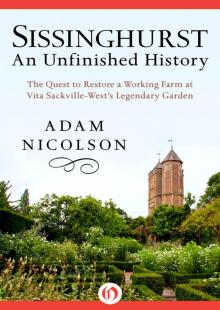 Sissinghurst, an Unfinished History
Sissinghurst, an Unfinished History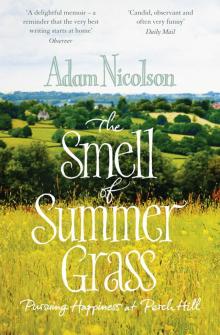 Smell of Summer Grass
Smell of Summer Grass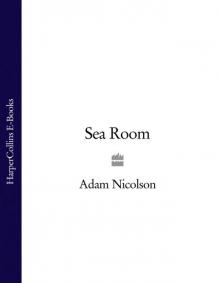 Sea Room
Sea Room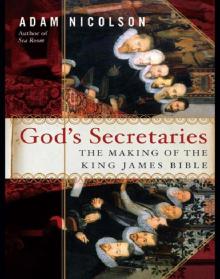 God's Secretaries
God's Secretaries Atlantic Britain
Atlantic Britain